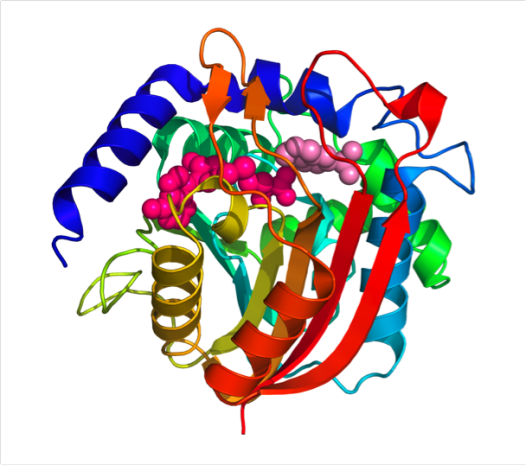Kick-starting Adrenaline
What is it?
We all know that feeling of being scared: your heart beats faster, you may start to sweat and you get the shakes. All these effects are being driven by adrenaline. In a previous post, we showed the structure of the receptor (the flight or fight receptor) responsible for binding adrenaline and causing many of these effects. Here we show the structure of the enzyme that makes adrenaline. Phenylethanolamine N-methyltransferase (PNMT). PNMT (http://www.rcsb.org/pdb/explore.do?structureId=1hnn) is the enzyme in the body responsible for the synthesis of adrenaline from noradrenaline in the final step of adrenaline production in the body.
What does it look like?

Image generated by Pymol (http://www.pymol.org/)
Human PNMT is shown coloured from blue (N terminus) to red (C terminus). Two ligands bound to the enzyme are shown in pink (AdoHcy – the cofactor product) and light pink (SK&F 29661 – a PNMT inhibitor). The protein is found in high levels in the adrenal gland, where adrenaline is secreted from, however lower levels are also found in the brain and heart.
Where did the structure come from?
The structure of human PNMT was first published in 2001 by Prof. Jenny Martin and colleagues. The structure was subsequently used to guide development of pharmacological tools to better understand the role of adrenaline in the brain. Adrenaline in the brain has been linked to Parkinson's disease, blood pressure and ethanol intoxication, but its role is still not fully understood.






